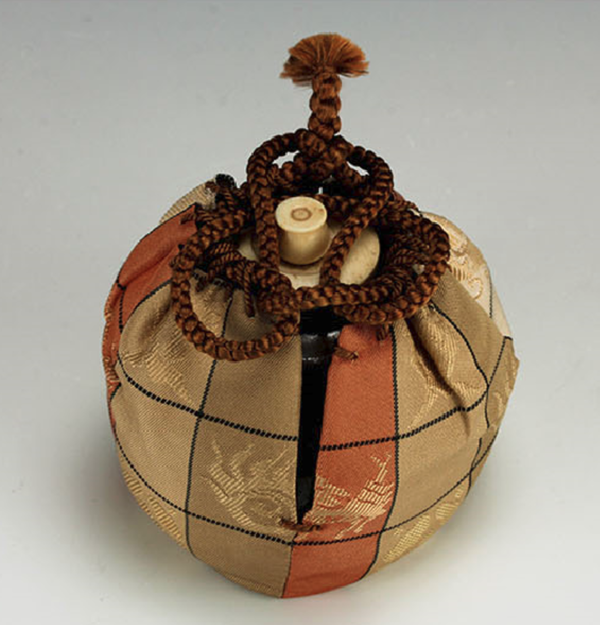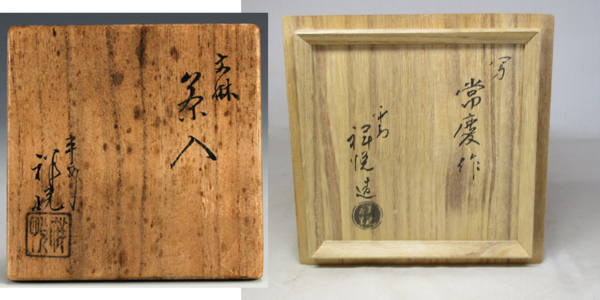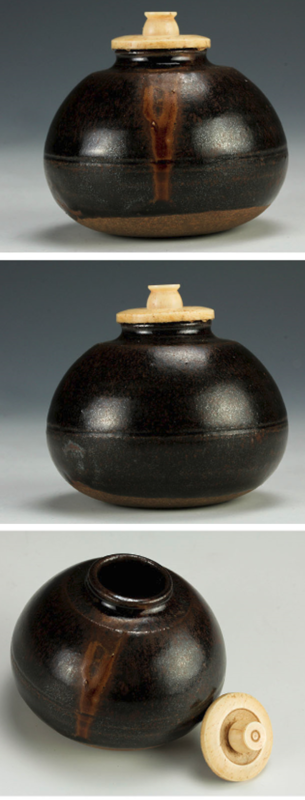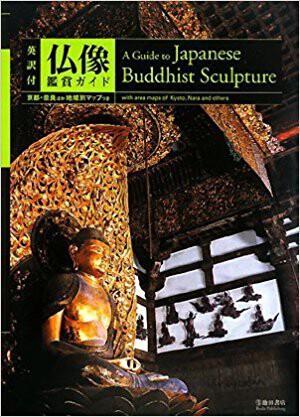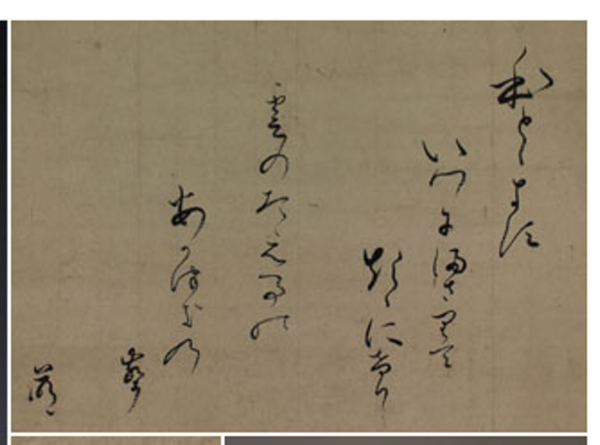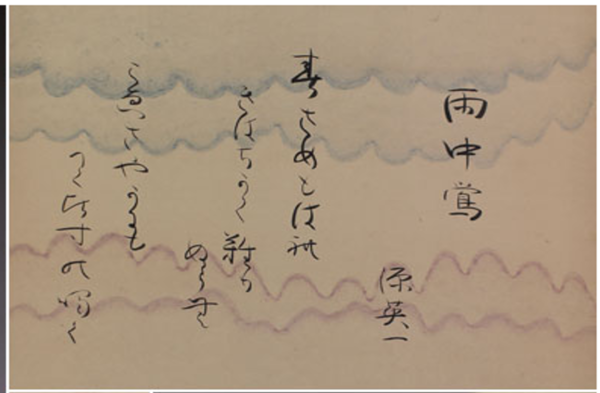-
Posts
1,813 -
Joined
-
Last visited
-
Days Won
8
Content Type
Profiles
Forums
Events
Store
Downloads
Gallery
Everything posted by Henry Wilson
-
The round item could be a mirror. Lots of classics have kagami in the title, supporting the arts and culture theme...
-
I think that KO usually denotes pre Edo production. They could be modern reproductions of Ko Tosho in my honest opinion.
-
Both designs are published as KO (古) designs somewhere, if my memory serves me well. However, the positive / negative silhouette of the oar sukashi seems unusual and in my humble opinion not expected for the time period suggested by the KO prefix The cutting of the dragonfly seems far too crisp for a KO prefix. As always just me thinking out loud.
-
Thanks Guido I don't think the lid has any Schreger lines. There is a grain a bit like wood not nothing like a cross hatch pattern I think.
-
Thanks you Steven It never occurred to me to reach out to the potter community. I don't know any potters. The lid material was described as 骨 which is bone. However, I am not sure how a distinction could be made between bone and ivory by visual inspection only. Also thanks for the compliment too. It is indeed a very nice small object. Here is a bonus picture of it in it's silk bag.
-
Thank you Evan for taking the time to search and post what you found. The piece I have is a boxed chaire (tea caddy). Comparing the inscriptions on the boxes they seemed to be done by very different people. (Mine is on the left/ ebay on the right). Could it be that Heian Shoetsu is a generic name? Or a difference between workshop produced items and that done by the head of the workshop I wonder?
-
No, I wasn't. It was just an observation. Sort of like the working on rough paper one does when they do a maths problem. Grist to the mill that leads to a conclusion of sorts. Thank you for the comments though and hope I did not upset you.
-
I am confused. You seem to be upset. I am sorry if I have offended you. It was you that mentioned the tsuba you have since deleted is "a true period piece". I think this could have lead to an interesting discussion on attribution. I apologise once again.
-
Thank you for the kind words. Although, I feel you are basically restating my point that you say you disagree with. I think most of us know the tsuba you have posted and that was an example that came to mind when I typed my (near perfect ) response. The question is who says the example you disclose is "a true period piece"?
-
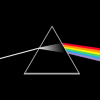
Uncommon Bowl Shaped Tsuba. Idea About School Or Origin?
Henry Wilson replied to Krystian's topic in Tosogu
Could the kanji be 思 (judge, believe) 邪 (wicked, injustice). The last one could be a stylised 天 (heaven, sky) but I doubt it because of the dash on the left between the two horizontal strokes. My dictionary interprets the strokes as 死 (death). -
In light of the discussion, I too would concur that it is indeed a replica of sorts and not a try antique. I hope that this conclusion is not too disappointing.
-
That is very helpful. A copy of a signature and some comments, including possible time frame of activity. Thank you very much John.
-
A long shot but... Has anyone any information on a potter who signed 平安祥悦 (Heian Shoetsu). I suspect that the Heian refers to him working in Kyoto. Any information at all would be greatly appreciated, especially dates he worked. Thank you all in advance.
-
Ko Tosho tsuba that are ubu (unaltered) are usually quite expensive as they are rare. It is quite thin which is a characteristic of older stuff. However, the surface looks well hammered and seems carefully done in places. The motif is also quite realistic (not as abstract as such older motifs can be). It could be Momoyama, but I would think the care that it was made with seems more Edo to be honest. By contrast, Momoyama stuff tends to be indulgent with inlay or elaborate motifs I think. The Edo period saw a back-to-basic attitude amongst the warriors and revival in older styles of tosogu to consolidate this so by process of elimination would bring me to Edo... Or Muromachi if you are lucky... I hope that makes sense. BTW the above is just my general observations and I am not at anyway saying that I am right. More like me thinking out loud.
-

The Bushi Meaning Of Nasubi, Eggplant, Aubergines
Henry Wilson replied to Bugyotsuji's topic in Tosogu
It is also the shape of some chaire. https://chano-yu.com/Japanese-museum-antiques/chinese-pottery-tea-caddy-tsukumo-nasu/ (I am not sure if this is relevant but thought I would chip in just in case.) -
Definitely Tosho. A text book example in fact. I don't know about the Ko (古) attribution. The photos make it hard to see any indication of what is taken as age.
-
You are welcome John What the maker intended it to be might be another thing entirely. However, in my opinion such questions are fun to ponder but not so important. The interpretation of a vajra could derive from imagery from social, cultural and literal experiences. A person from the past or from a different culture may see it differently because of the different social imagery they have cultivated. Basically it is what we see it as, and it is likely that people have and will continue to interpret it differently.
-
I think there is no conclusive answer and it possibly meant different things to different people because of it's abstract nature. It is a geometric, repeated motif arranged with one off setting the other as if they have been deliberately placed. This seems to suggest that it is not a representation of a natural phenomena (water, snow etc). However, the dots could represent water droplets, a symbol of transience/impermanence. To me they might be vajra.
-
I think the workmanship is not bad. Not stellar stuff but I think of a quality that is acceptable.
-
I highly recommend this book. It gives a nice overview of principle statues in Japan. https://www.amazon.com/Butsuzō-Kanshō-Gaido-Eiyakutsuki-Sculpture/dp/4262145336/ref=sr_1_2?ie=UTF8&qid=1517226384&sr=8-2&keywords=A+Guide+to+Japanese+Buddhist+Sculpture
-
I would say the item is a lotus. For some reason I feel that the gold Kannon statue might not be Japanese. The style of image is from Tang China, especially how the belly is protruding, as seen in Yakushi-Ji in Nara (see below). But the workmanship does not appear Japanese to me. Could it be Chinese?
-
I think it is interesting that there is a range of interpretations of the motif. It is reasonable to assume that tsuba motif references can be subtle and tied to a highly specific sociocultural context. To fully appreciate them requires an understanding of the assumptions and knowledge that the artist brought to the piece, hence the discrepancy between what each of us sees. Despite this, I say Barry and Kyle are on the money...
-
Can anyone decipher the script on these two poems? Thank you very much in advance. The first one: And the second: 雨中鴬 by 源英一
-
Tosogu no Kigen is very enlightening with regards to kozuka and kogai: http://www.japaneseswordbooksandtsuba.com/store/books/b675-tosogu-no-kigen http://www.lulu.com/shop/masayuki-sasano/tosogu-no-kigen/paperback/product-6438122.html



